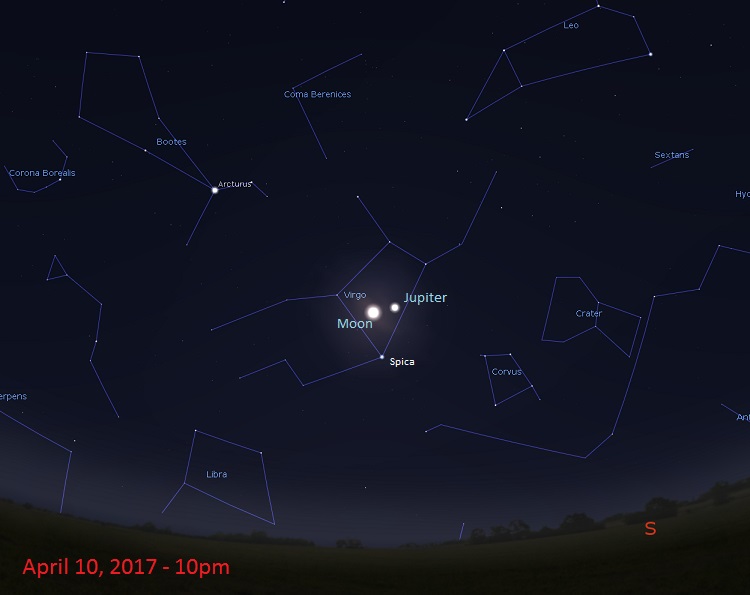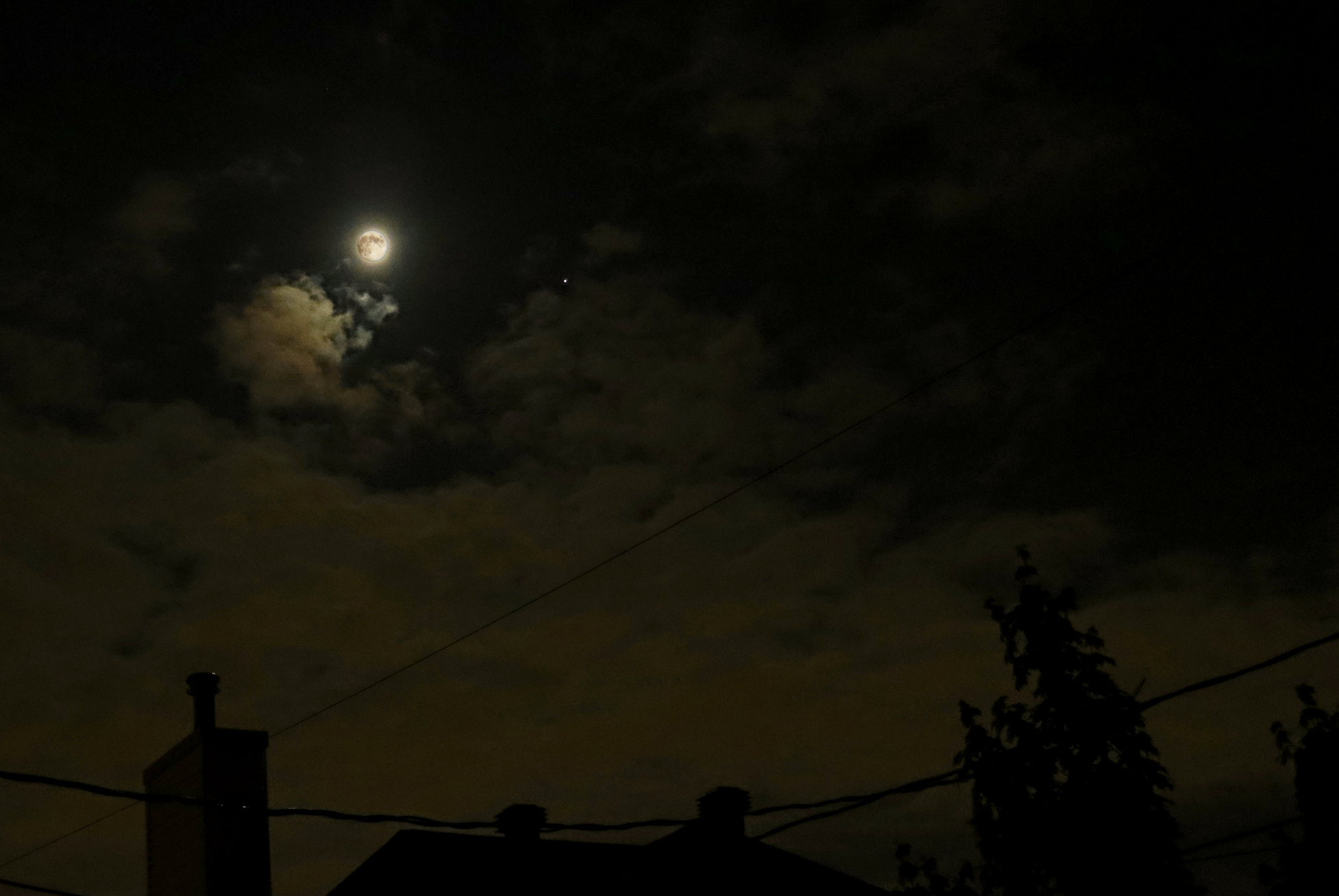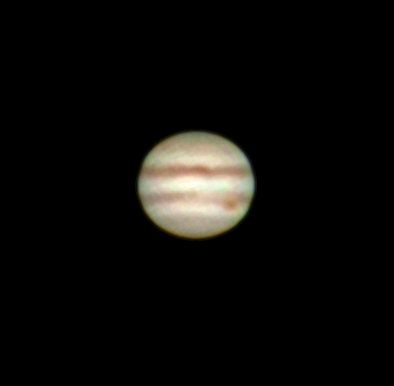This weekend is the best time to see Jupiter of all 2017, because the planet is at opposition, meaning it is exactly opposite to the Sun and the Earth-Jupiter separation is also at its closest.
The photo below was taken during the September 2010 event and I happened to fall upon a fantastic low turbulence window in the atmosphere. Look closely and you’ll see the shadow of one of those moons on the Jupiter’s surface.

Jupiter – Benoit Guertin
Photos of Jupiter with the moons are a little tricky. Capturing the smaller moons require more exposure or gain, but at the risk of over-exposing the planet and turning Jupiter with those wonderful cloud bands into nothing more than a white sphere. It is always better to take a series of images or videos with different settings and review them at a later time on the computer. Some information on planetary imaging and processing is provided in my blog on imaging with a webcam.
Planetary imaging is all about controlling turbulence. Air turbulence whether within the optics, telescope, near the ground or high atmosphere will give you a blurry view. Hence some simple tips are:
- Allow your equipment to cool down a few minutes such that the equipment temperature can stabilize and match the outdoors.
- Past midnight is better as this allows time for the ground to cool especially after a sunny afternoon, reducing convective currents.
- Wait until Jupiter is high in the sky, that way there is less atmosphere between you and Jupiter. By looking straight up, you will be looking through a smaller “air column”.
A good time will be on April 10th when the Moon will next to Jupiter. See the sky chart below showing the southern part of the sky at 10pm EDT. The planet will track west as the night advances.

April 10th 2017 Sky Chart












